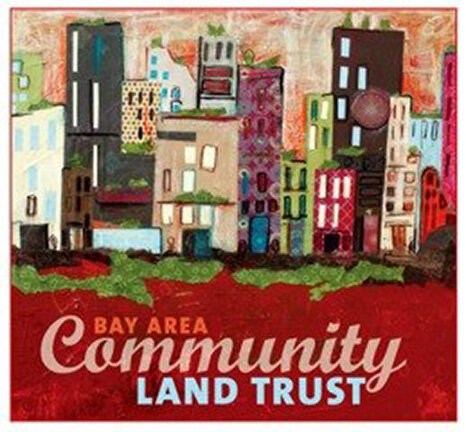Community Land Trusts and Racial Justice
Community Land Trusts and Racial Justice
Author: Connor Nakamura
The history of cooperative housing and racial identity is complicated. Cooperative housing was inaccessible to people of color for much of the 20th century due to the expensive buy-in process that prioritized equity over affordability. After WWII, there was an increased interest in housing cooperatives among both white and Black GIs, and many wished to utilize the government subsidization of suburban developments to finance affordable, multiracial housing cooperatives. However, these multiracial developments generally failed, including the “Peninsula Housing Association,” an organization that sought to purchase 260 acres of land in the South Bay. The 150 person association was majority white, but due to the few Black members, the Federal Housing Administration denied them loans. This was a common experience for Black people who sought housing in both fledgling cooperatives and traditional suburbs all across California.
Community Land Trusts (CLTs) have done much better in this regard. The first CLT was “New Communities,” a project led by civil rights leaders that aimed to provide African-American farmers with secure access to land. Nowadays, CLTs retain this commitment to racial justice by prioritizing housing preservation in gentrifying areas – which house communities that were undoubtedly affected by redlining. Additionally, CLTs utilize the limited equity co-op structure, which has a lower buy-in cost compared to traditional co-ops while still allowing residents to gain equity. In recent years, policymakers have been enthusiastic about the potential for CLTs to advance racial justice, and local governments have in turn provided more funding for housing acquisition.
However, the downside to this recent growth of CLTs has been the professionalization of the movement, and thus a distance from grassroots organizers focused on racial justice. Policy advocate Tram Hoang writes about the current gap between community development organizations and grassroots activists, despite a history of grassroots organizers – like “New Communities” – advocating for the creation of those community development organizations. Hoang acknowledges that this professionalization is natural given the complex processes and relationships that community development organizations have to navigate. Additionally, CLTs are different compared to traditional affordable housing organizations because CLTs are often neighborhood-based and still retain a deep connection to grassroots activists. Still, Hoang offers important advice on how institutions can support local activism. Organizations should take clear public stances on social justice issues, own their role in the movement as the insider (part of the system), and do work to advocate for equitable policy on a statewide level.
Another question relevant to CLTs, is how racial dynamics within cooperatives affect residents’ relationships and mental health. There are few studies about the psychological effects of housing cooperatives and even fewer that focus racial dynamics. An extensive literature review focused on the physical and mental wellbeing of cohousing (not cooperative) residents concluded that, “All but one study assessing quality of life and wellbeing reported positive benefits for cohousing residents.” These are encouraging findings, but the review mostly focused on European developments and didn’t acknowledge any racial dynamics. One of the few studies that directly addressed racial dynamics within a housing cooperative was focused on a majority Black LEHC in Harlem. Researcher Jill Siegel writes about how many of the non-Black residents in the cooperative felt alienated due to different cultural values and traditions, including one Latina resident who ran for the board but lost. There were also tensions between the Afro-Latino and African-American residents, and between the college educated and non-college educated residents. Siegel addressed the complicated racial and class dynamics using Bourdieu's concept of habitus, where “social order is progressively inscribed in people’s minds through ‘cultural products’ including systems of education, language, judgments, values, methods of classification and activities of everyday life.”
Additionally, there is always a difficult transition from being a renter to an owner, especially with individuals from marginalized communities that have not had access to property in the past. LEHCs also necessitate a “framework of interdependence that a cooperative needs to survive and flourish,” which is often contradictory to the individualistic conception of property ownership. Siegel maintains that “The problem with LE(H)Cs is that they exist within a capitalist framework,” while also offering “‘pockets of resistance’ against social injustice and housing inequality.”
Our Resident Education director addresses the difficult dynamics that come with co-op formation in their facilitation development. There is an emphasis on “naming, intervening, and addressing systemic power,” which often manifests in racial and gendered dynamics. The co-op remains a contradictory yet necessary site of resistance in a financialized world.
